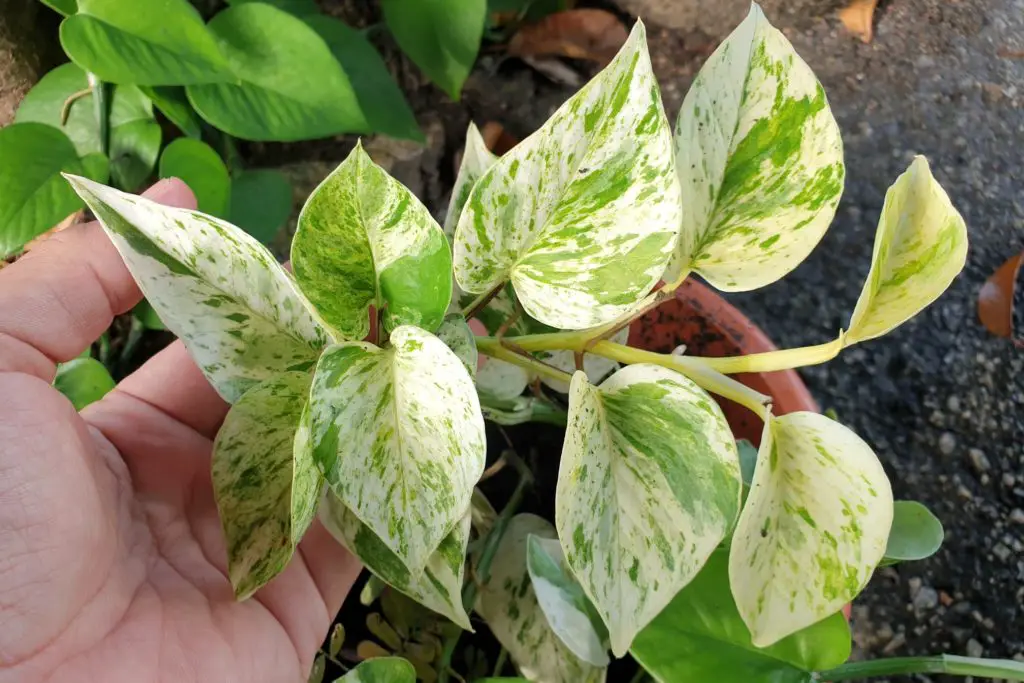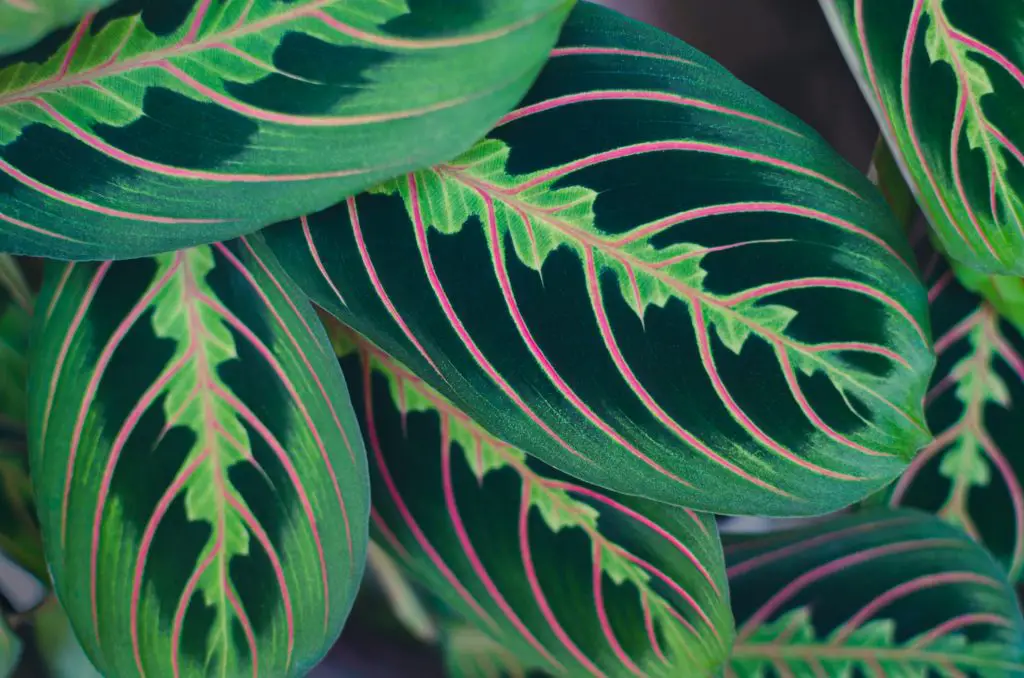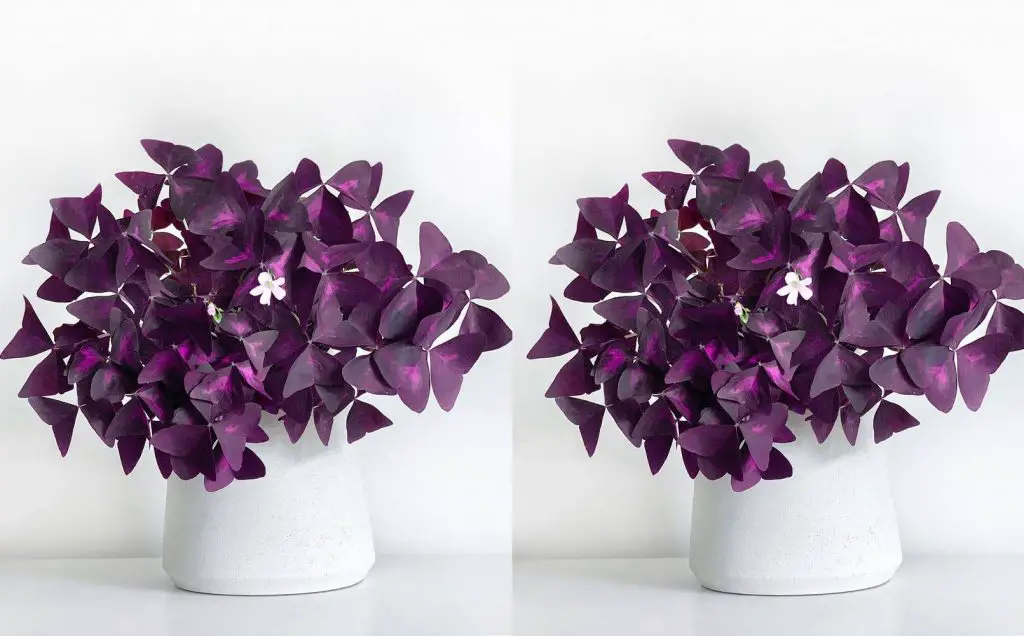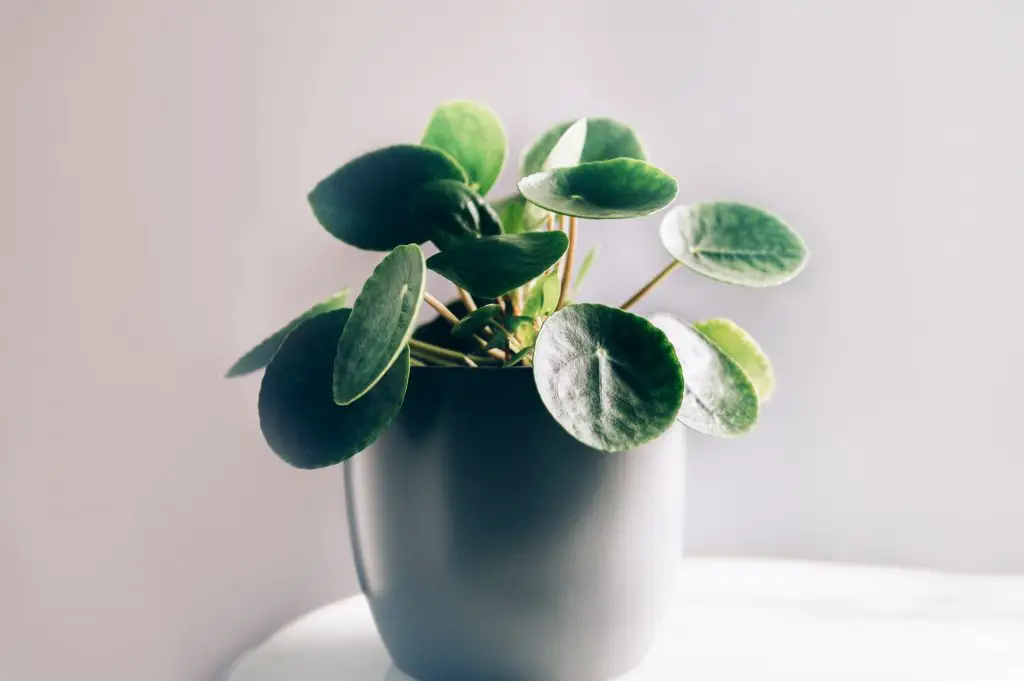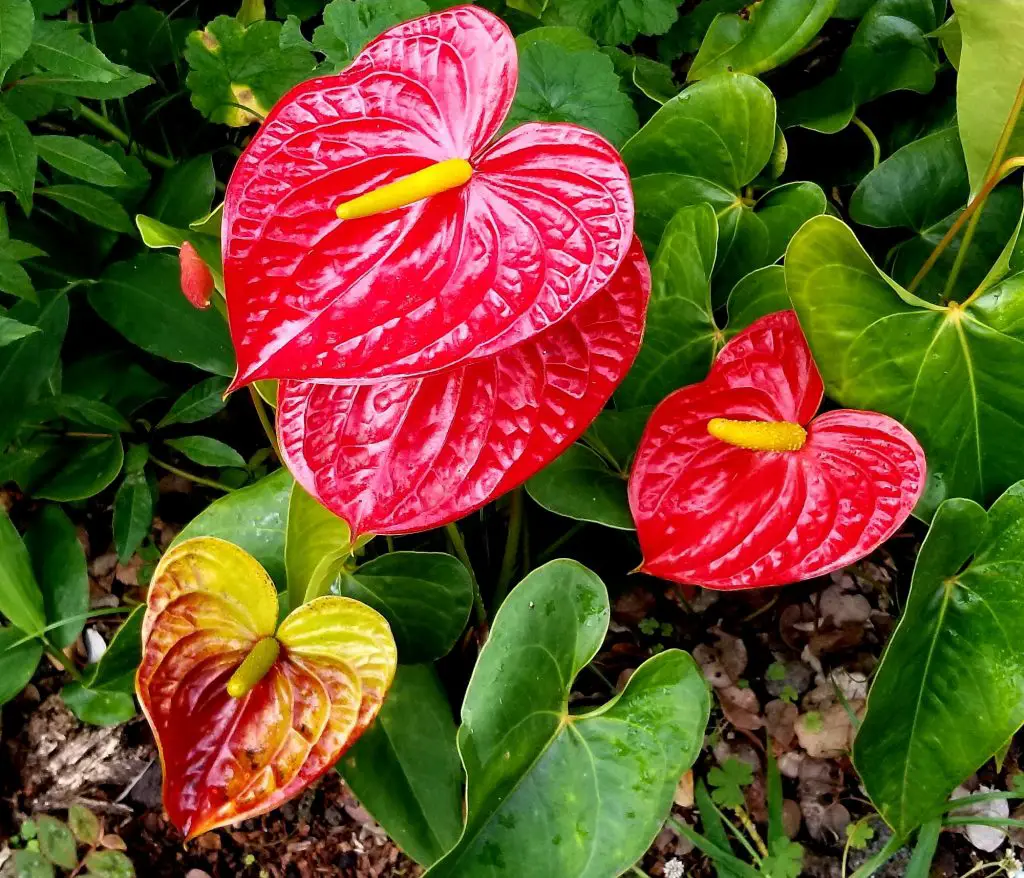This beautiful mix of splotches of green and white house plants is your quick fix to a dull and seemingly boring environment. The Marble Queen Pothos is popularly called the money plant or devil’s ivy. One interesting fact about the Marble Queen Pothos is it can be ground grown or potted. In addition, the Marble Queen Pothos can grow on walls and trees, this means, they can grow and wrap their vines across a tree.
To choose how your Marble Pothos would be grown depends on you. Asides from being ground or pot grown, it could be hung on dangly baskets to accentuate the beauty of your home and environment; not your regular houseplant, right? I know. How beautiful your home would be if dangly baskets filled with Marble Queen Pothos are placed at strategic places!
The Marble Queen Pothos, although the name connotes sophistication is not in the least difficult to propagate. If Marble Queen Pothos is next on your house plant to-grow list, this article is what you have been waiting for.
This article is a complete care and propagation guide for your Marble Queen Pothos. All you need to know about the house plant ranging from its origin, propagation methods, plant care to care tips have been provided here.
Table of Contents
Marble Queen Pothos Plant Background
| Common Name | Marble Queen Pothos, Devil’s ivy, Money Plants |
| Botanical Name | Epipremnum Aureum |
| Light | Bright indirect light |
| Plant type | Tropical nature |
| Soil type | Organic soil |
| Soil ph. | Well-drained |
| Water | Moderate |
| Temperature | 65°F – 90°F |
| Native | Southeast Asia, French Polynesia, and Australia |
| Toxicity | Toxic. |
As earlier mentioned, the plant can be grown on dangly baskets which means they have climbing features. The Marble Queen Pothos which is native to Southeast Asia, French Polynesia, and Australia belong to the Araceae family.
The plant is characterized by its variegated leaves of splotches of green, white and, cream. When the plant is grown, it could grow up to 2 feet in height and when grown on walls or than most house plants. It is one houseplant that commands attention with its leaf size.
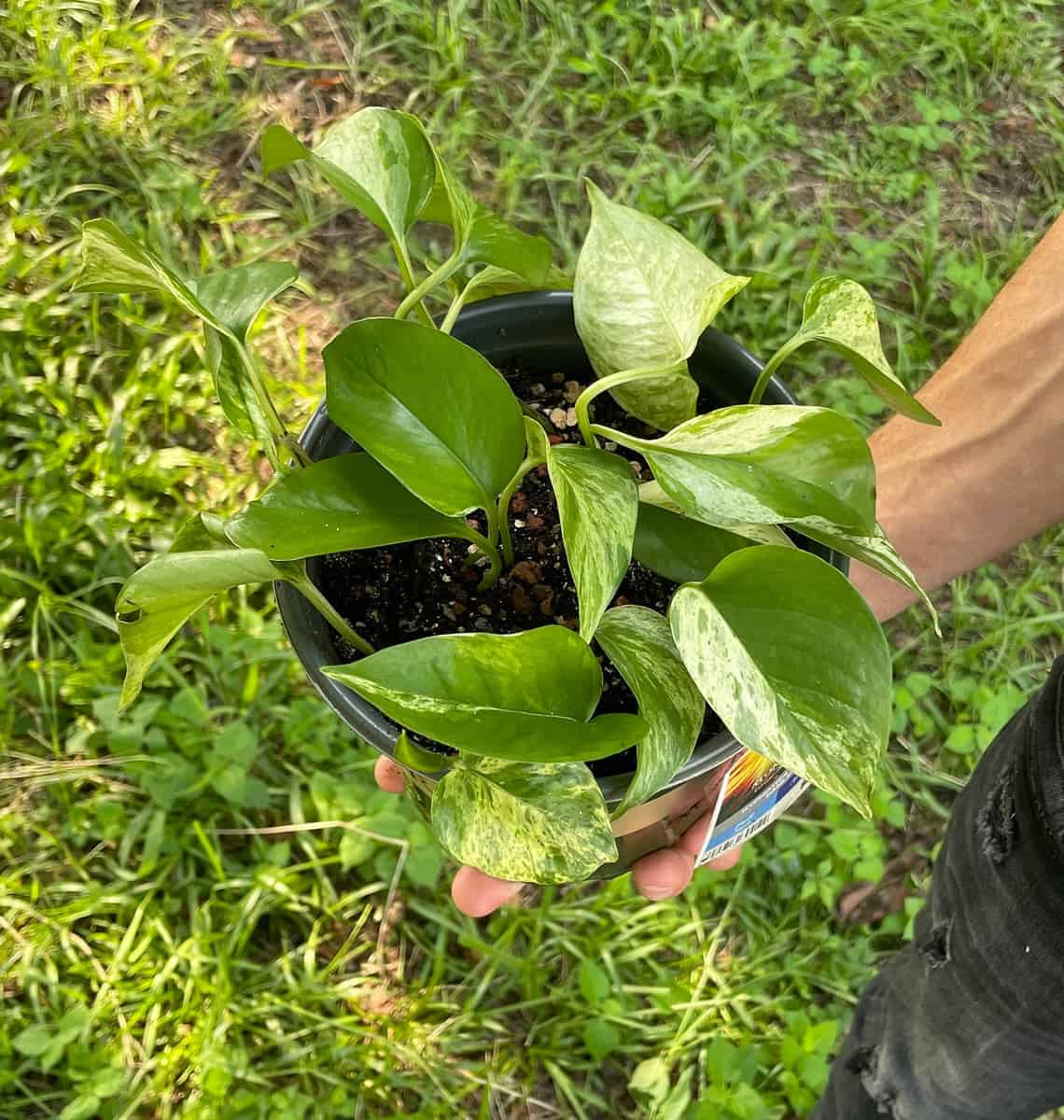
Marble Queen Pothos Plant Propagation Methods
Propagating the Marble Queen Pothos is quite easy once you are acquainted with all the propagation methods and what to provide in the propagation process.
Marble Queen Pothos Plant Water Propagation Guide
After receiving your Marble Queen cutting, immediately remove it from the package if you ordered it. On the other hand, you could use a clean scissor to cut along stems to remove individual leaf cuttings.
- The cutting should be moved to a small container filled with water.
- Ensure where the area where the leaf meets the stem and roots form (these parts are called nodes) is placed below the level of the water
- Place container in a location where it can receive bright indirect for proper growth
- Change the water of the plant about 2 – 3 times weekly
- Within several weeks, root growth would have begun. After substantial growth has been noticed, you can now move to well-drained soil.
The benefit of this method is you could visibly see the growth process of your Marble Queen Pothos.
Marble Queen Pothos Propagatin Via Tip Cutting
Select an appropriate container for the Marble Queen Pothos. Ensure the container is well drilled for good water drainage.
- Fill the pot with soil. Peat moss and perlite could be added to the soil to provide an organic mix.
- Cut the part that extends to a node towards the base of the stem. Ensure that parts to be cut are disease and pest-infested-free, as using affected parts may inhibit the growth of the plant or lead to an unsuccessful propagation.
- Use a clean stick to create a deep hole in the potting medium then stick the stem into the hole and use the moist soil mixture to hold the plant firmly
- Water the soil mixture and ensure the water drains out to create a moist soil mix.
- Place pot in a location where the plant can receive bright indirect light and where the weather and humidity are relatively low.
Within about 3 weeks of propagation, check for roots. Once the plant has properly rooted, transplant to a permanent soil and container
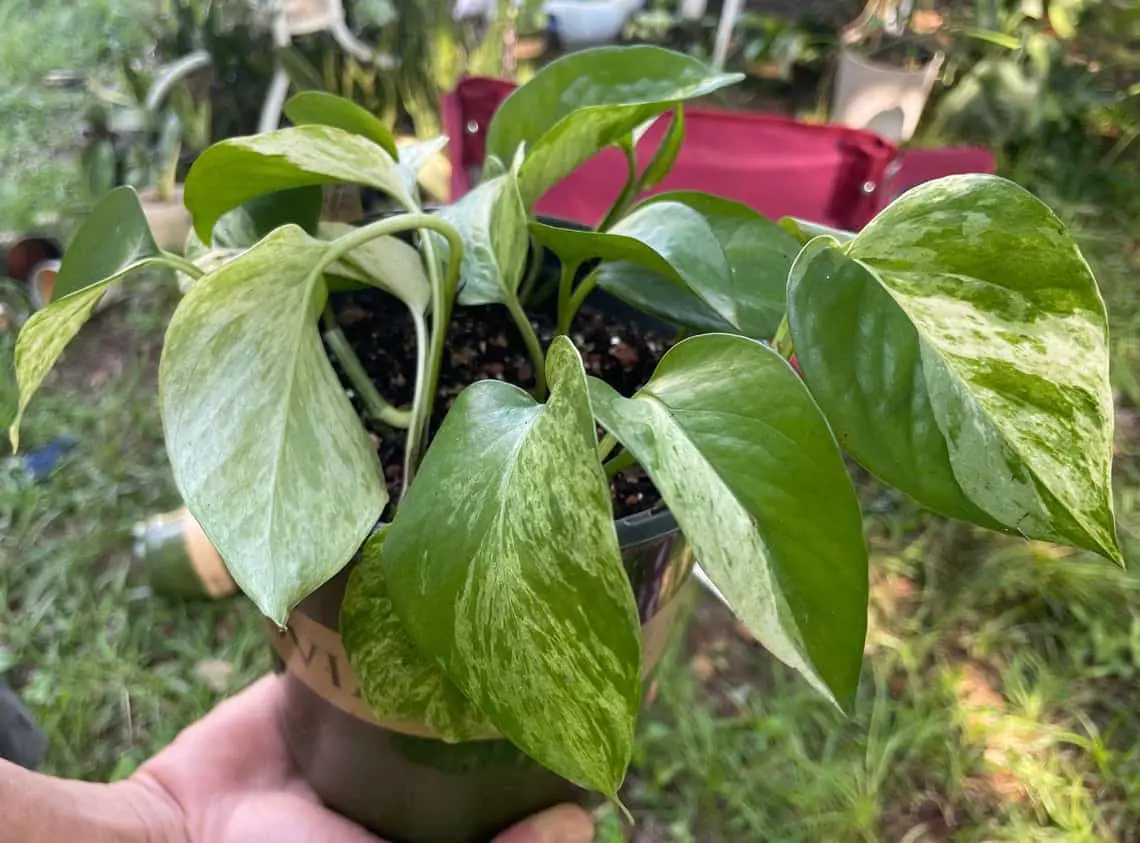
Marble Queen Propagation Via Layering
- Select a mature, healthy plant and make delicate incisions through the stem below the node of the plant.
- Wrap the incision in damp sphagnum moss before covering it with a plastic bag. At this stage, the moss must be kept moist so the roots will properly develop.
- Once you detect root growth, separate the baby plant and place it in a different pot or container.
- Choice of propagation is entirely dependent on you. Choose what suits you.
Marble Queen Pothos Plant Care
Now you know how to propagate your Marble Queen Pothos, of course, the next thing is to know is how to cater to the plant. Below is a list of the plant’s requirements and all you need to provide to ensure their survival.
1. Light
The Marble Queen Pothos thrives in areas with bright indirect light although they can still survive for a while in areas with low light. In choosing a location for this plant, avoid an area where the plant would be exposed to direct sunlight; exposure for a long time would affect the foliage appearance of the plant. If ingrown indoors, choose an area near the window where it could receive light or make use of artificial lights like bulbs
2. Water
Unlike other houseplants, the marble queen Pothos prefers to dry out before being watered. This means this plant would be watered infrequently. Check the dryness level of the soil before watering it. Also, let the water completely drain out after watering.
3. Soil
The Marble Queen Pothos would grow best in organic soil. Making use of peat moss also boosts the organic mix of the soil. Ensure the soil chosen is well-drained.
4. Humidity
This plant thrives in low humid areas. If the air is too dry, the foliage appearance may become affected. To improve the humidity level for this plant, you could make use of humidifiers or grow the marble queen amidst other plants; this is a guaranteed natural method of improving the humidity level.
5. Potting
Some growers prefer to grow their plants in pots or containers. Growing this plant is not a problem, the problem crops up when you use an inappropriate pot. Ensure the pots or containers chosen are well drilled to allow free drainage of water’ inappropriate pots would make the soil susceptible to overwatering and sogginess which is harmful to the roots.
6. Temperature
This plant prefers warm temperatures between 65°Fand 90°F. they do not well in cold environments. During winter, ensure you move the plant to a warmer area.
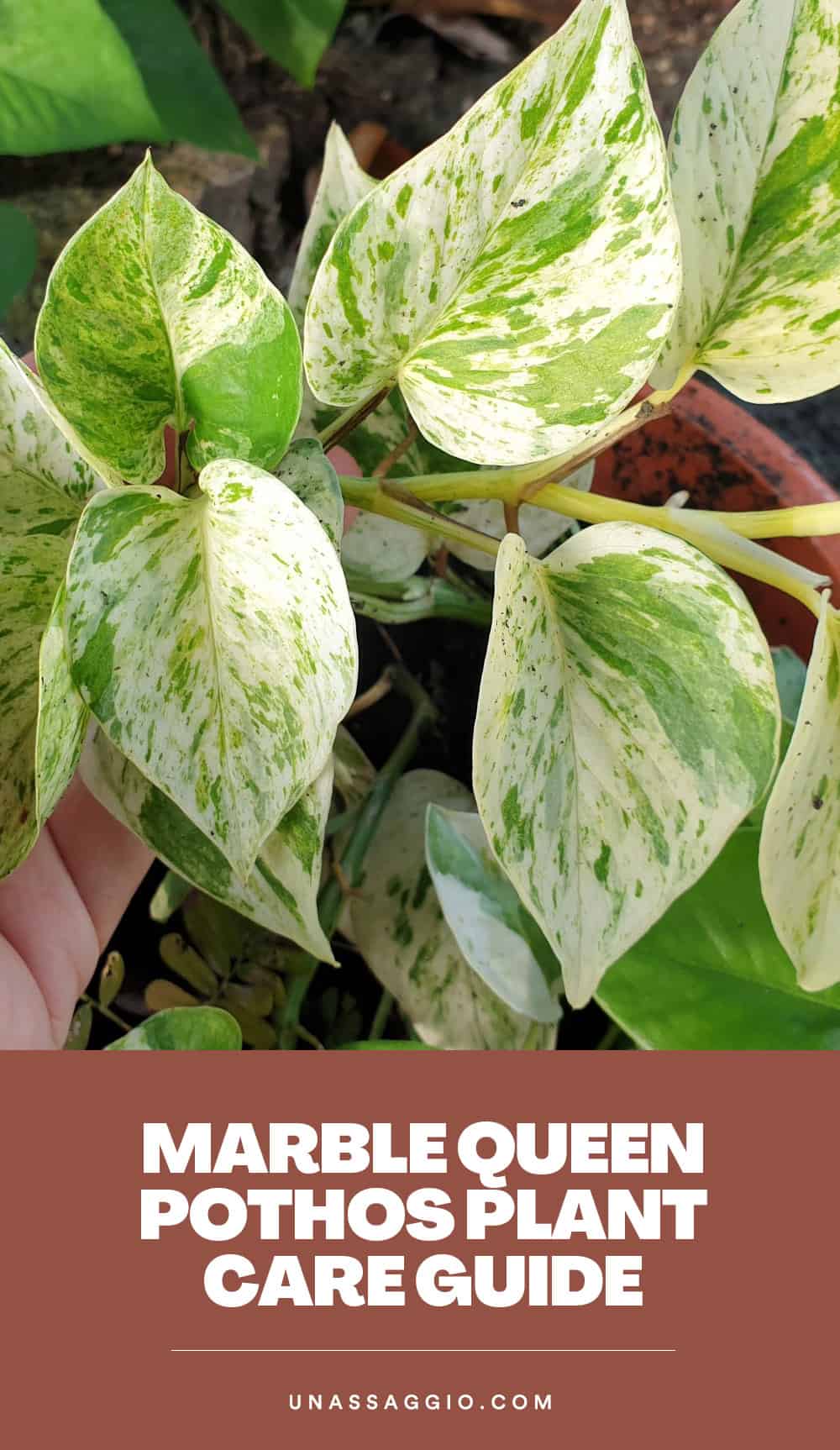
Marble Queen Pothos FAQs
Can I hang my Marble Queen Pothos?
Yes, you can. This plant has long vines that can make it a potted plant or hanging plant. This plant can be made to grow on walls and poles.
How much light does my Marble Queen Pothos need?
This plant requires bright but indirect light. If grown outdoors, ensure it gets 4 to 5 hours of bright indirect sunlight.
Should I mist my Marble Queen Pothos?
Yes, you should. Misting improves the humidity level of your plant, wades away pests and, keeps the foliage appearance clean and attractive.
Is Marble Queen Pothos toxic?
Yes, it is toxic both to humans and pets. If ingested, they could irritate both humans and pets. You are advised to see a doctor immediately after ingestion; the same goes for your pet.
Why are the leaves of my Marble Queen turning yellow?
The leaves of this plant usually turn dry when it has been overwatered for long. Constant overwatering exposes the plant to root rot. A major sign of overwatering is the leaves start to turn yellow.
Why are the leaves of my Marble Queen turning brown?
The leaves of this plant begin to turn brown when they have been exposed to low light for long and very dry environments. Either situation warrants a change in location to suit the needs of the plant.
Why does my Marble Queen Pothos have holes?
Marble Queen Pothos has holes for a variety of reasons. It could be that your plant has leaf spot disease or damaged root hairs that occurred during repotting. If the plant is still very young, be patient to watch changes. However, if the plant is old, it may be that the plant is stressed.
Does Marble Queen purify the air?
Yes, they do. They have been scientifically proven to remove airborne toxins.
Wrapping it up
Having a hitch-free propagation can be easy if you follow all the steps. In addition, the Marble Queen is one plant that does not crave attention so they are low maintenance plants. Here are additional tips for your Marble Queen pothos plant.
- In fertilizing, select a balanced liquid fertilizer. Dilute the fertilizer and ensure the soil is moist before adding it to the soil. Ensure the plant is not over-fertilized as it can do more harm than good. Fertilizing once a month is fine.
- Repot your plant once it has outgrown its current pot. This allows for space to grow. You could change every 12 to 18 months depending on the growth level of the plant
- Combat pest infestations upon detection as they could destroy your plant. Misting regularly wades off pests from the plant.
- Modify your watering schedule to suit the needs of the plant. After overwatering, stay off watering for a while till the soil and roots dry out.
With all of these tips, your Marble Queen Pothos is sure to bloom.

